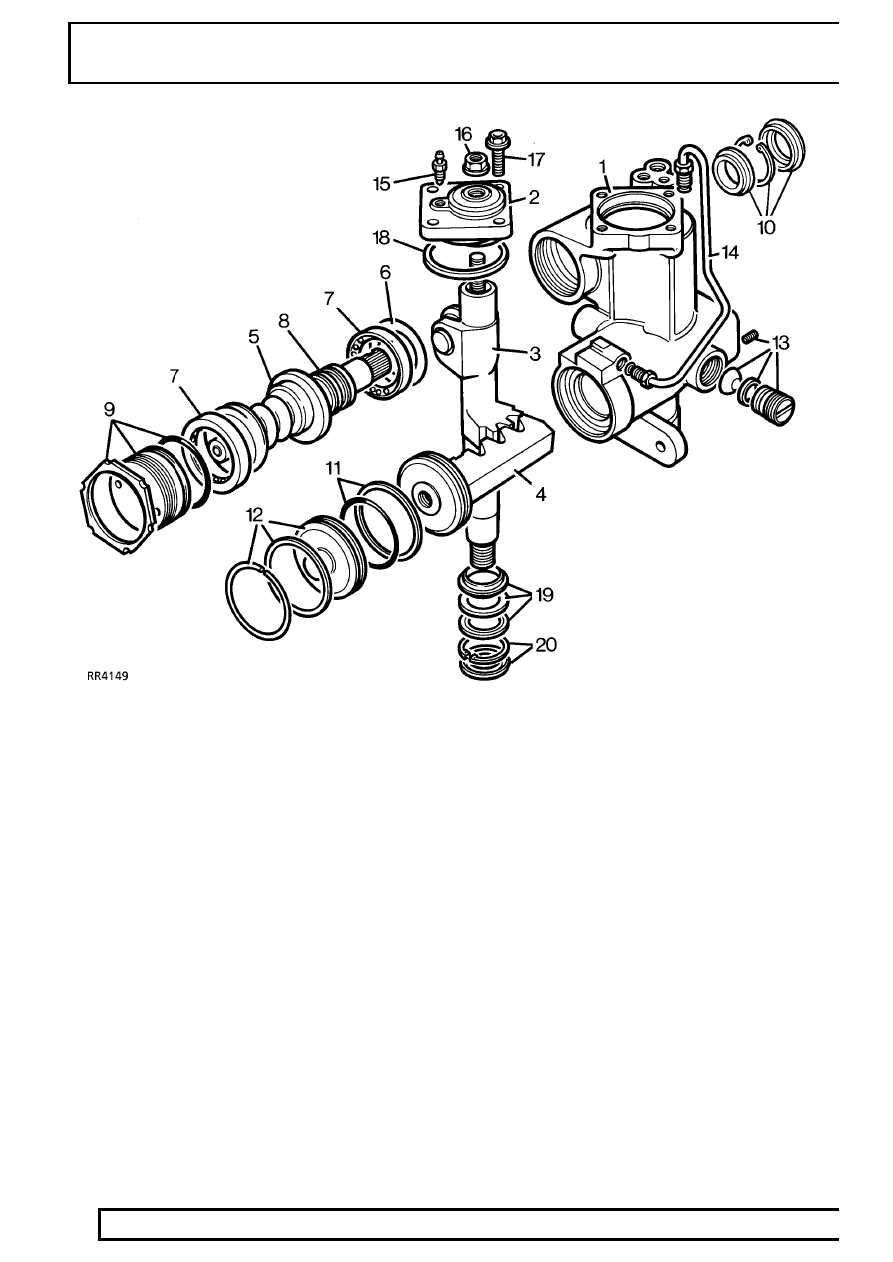Land Rover Discovery. Manual - part 131

57
STEERING
4
DESCRIPTION AND OPERATION
Power steering box components
1. Housing complete with sector shaft bearings
2. Cover plate complete with bearing
3. Sector shaft
4. Hydraulic piston/rack
5. Worm/valve and torsion bar assembly
6. Shims for centralizing worm/valve
7. Ball race (2)
8. ’Teflon’ seals for valve sleeve (3)
9. Bearing adjuster, locknut and seal
10. Worm shaft pressure seal, circlip and dirt
excluder
11. ’Teflon’ and rubber seal for piston
12. End cover seal and snap ring
13. Adjustment components for piston/rack
14. Hydraulic pipe
15. Bleed screw
16. Sector shaft adjustment lock nut with seal
17. Cover plate bolts (4)
18. Cover plate seal
19. Seal, washer and backup seal
20. Circlip and dust cover